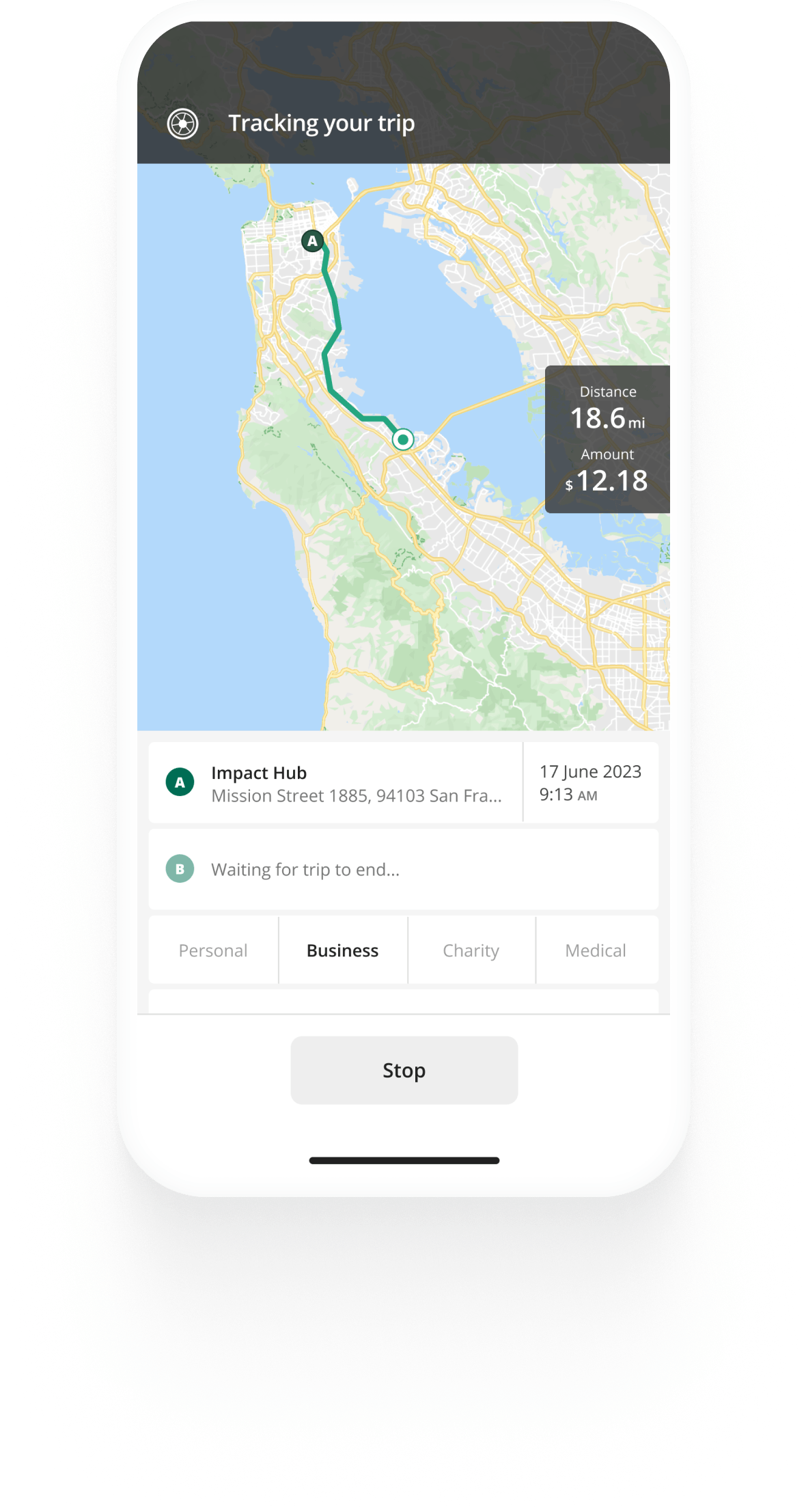Track mileage automatically
Get started
How To Keep Car Allowance Tax-Free
When employers provide a car allowance, one of the most common concerns is how to minimize the tax burden. Employees are often left wondering why their allowance is considered taxable income and at what rate.
However, car allowance can be tax-free altogether. Keep reading to find out how.
When do employers provide a car allowance?
Employers typically provide employees with a car allowance when they need to use a car regularly for work. Employees use this allowance to pay for fuel, maintenance, insurance, depreciation, and other expenses associated with using a personal car for work purposes. In some cases, employees may also use the allowance to rent or buy a car.


Mileage tracking made easy
Trusted by millions of drivers
Automate your logbook Automate your logbook

Automatic mileage tracking and IRS-compliant reporting.
Get started for free Get started for freeWhen is car allowance taxable income
The taxability of a car allowance depends on whether it is an accountable or non-accountable car allowance plan. Employers can choose a number of different types of plans to provide their employees with a car allowance.
Non-accountable plan (taxable car allowance)
If you choose this type of car allowance as an employer, you will pay a flat amount to your employees to help cover car expenses, which the employees can use as they please. With this type of plan, employees are not required to track their mileage or have expenses approved, which makes it easier for them. But, if you use a non-accountable plan, the car allowance will be taxable as compensation, like wages. So, your employees will lose part of their car allowance to taxes.
Accountable plan (non-taxable car allowance)
You could also choose to use an accountable plan for your employees’ car allowance, in which case, all substantiated parts of the car allowance will not be taxable.
If you use an accountable plan for your employees’ car allowance, you must track your employees’ business mileage. Most companies track employee mileage by keeping a company mileage log.
A mileage tracker like Driversnote can help with that. The mileage tracking app records your employees’ trips automatically and suggests the purpose of the trip. They can easily change the classification of the trip to ensure it’s correct.
Anything below the standard mileage rate is non-taxable
One way to ensure you provide a non-taxable car allowance is to verify your employees’ mileage for a certain period of time and then reimburse them.
This allowance will remain tax-free as long as it’s not above the IRS standard mileage rate for business travel, which is 70 cents per mile for 2025.
Fixed and Variable allowance (FAVR)
Another option for providing employees with a tax-free car allowance is a Fixed and Variable Allowance (FAVR).
To use this allowance, your business needs to have at least five employees, each of whom drives over 5,000 miles a year. You will also have to ensure you follow the plan's IRS regulations.
A FAVR plan gives the employees periodic variable and fixed payments. The variable payments cover the operating expenses for the vehicle, such as fuel, oil, maintenance, and tires.
The fixed payment covers the fixed costs associated with a vehicle, including taxes, registration, license fees, insurance, and depreciation. Amounts are based on location.
Calculate the taxable portion of the car allowance
You could also provide your employees with a preset car allowance, but track their mileage. Then, take the business mileage you have logged for an employee and multiply this by the IRS standard mileage rate. Any portion of the employee car allowance that is less than or equal to this figure is non-taxable. However, any portion above this figure is taxable.
Example: Let’s say you gave your employee a preset car allowance of $600 a month. Then, for the first month, their business mileage log shows that they drove 800 miles. You would multiply the 800 miles by the IRS standard business mileage rate of $0.70. This would give you $560. This means $560 of the allowance would be non-taxable, and $40 of the allowance would be taxable.
FAQ

Tired of logging mileage by hand?
Effortless. IRS-compliant. Liberating.
Latest posts
- How To Write Off a Car For Business
- Free IRS Mileage Log Template - PDF, Excel and Sheets versions
- Free IRS Mileage Calculator
Related posts
IRS Mileage Guide
February 10, 2025 - 10 min read
Mileage reimbursement in the US — rates and rules for employees, self-employed and employers in the US.
IRS Mileage
December 23, 2024 - 2 min read
Find out what IRS mileage is and how you can claim it. See how much you can claim per mile from the IRS for your business-related driving.
DoorDash Background Check
October 21, 2024 - 2 min read
Here’s what to expect when DoorDash conducts background checks, how Checkr works, and why it may take longer to get approved.

